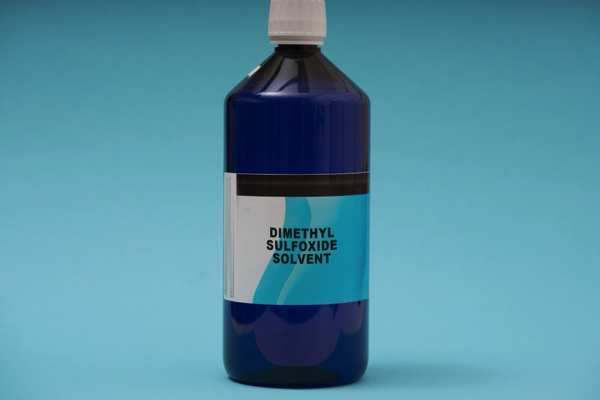Dr. Stanley Jacob and Robert Herschler examine DMSO, the controversial compound with untapped medical potential
06/13/2025 / By Kevin Hughes

- DMSO, synthesized in 1866, gained medical attention in the 1960s for its ability to penetrate biological membranes and enhance drug delivery. It shows anti-inflammatory, analgesic and bacteriostatic effects, aiding conditions like arthritis and interstitial cystitis (FDA-approved).
- Early animal studies linked DMSO to eye lens changes, halting clinical trials in the 1960s. Though later disproven for humans, this delayed mainstream adoption, limiting its current FDA approvals.
- Beyond medicine, DMSO boosts agricultural yields by improving nutrient absorption and serves as a versatile industrial solvent in electronics, pharmaceuticals and chemical manufacturing.
- Preliminary studies suggest DMSO may slow retinal degeneration (e.g., retinitis pigmentosa) and improve organ preservation due to cryoprotective properties, though risks like skin irritation and contamination require clinical oversight.
- DMSO’s future hinges on rigorous research. Its promise in drug delivery, inflammation reduction, and cross-industry utility is tempered by the need for controlled, evidence-based use.
For decades, dimethyl sulfoxide (DMSO) – a colorless, garlic-scented liquid – has fascinated scientists, medical professionals and skeptics alike.
Initially synthesized in 1866 by Russian chemist Alexander Saytzeff, DMSO didn’t capture serious medical attention until the 1960s, when researchers discovered its uncanny ability to penetrate biological membranes and enhance drug delivery. Today, it remains a compound shrouded in both promise and controversy, with applications ranging from pain relief to potential treatments for retinal diseases.
DMSO’s unique properties make it a standout in pharmacology. As a solvent, it can dissolve both polar and nonpolar compounds, allowing it to ferry medications deep into tissues – a trait that has spurred interest in targeted drug therapies.
Studies, including those cited in the book “Biological Actions of Dimethyl Sulfoxide” by Dr. Stanley Jacob and Robert Herschler, suggest DMSO possesses anti-inflammatory, analgesic and bacteriostatic effects. It has been used to alleviate conditions like arthritis and bursitis, with topical applications (typically 50 percent to 70 percent solutions) showing notable reductions in swelling and pain.
Yet its journey hasn’t been smooth; in the 1960s, clinical trials were abruptly halted after animal studies linked DMSO to lens changes in the eyes. Though later research confirmed these effects didn’t occur in humans, the setback stalled its mainstream medical adoption.
Today, DMSO is approved by the Food and Drug Administration only for interstitial cystitis. However, veterinarians and alternative medicine practitioners continue to explore its broader applications.
DMSO’s versatility extends far beyond healthcare. In agriculture, it enhances nutrient absorption, boosting the efficacy of fertilizers and pesticides. Research indicates crops treated with DMSO show improved yields, making it a valuable – if underutilized – tool for farmers.
Industrially, DMSO serves as a powerful solvent in chemical manufacturing and laboratory settings. Its ability to dissolve diverse compounds makes it indispensable in producing electronics, pharmaceuticals and specialty chemicals.
Emerging research hints at groundbreaking possibilities. Preliminary studies suggest DMSO could slow retinal degeneration in diseases like retinitis pigmentosa, offering hope to patients with limited treatment options. Its cryoprotective properties are also under investigation, potentially revolutionizing organ preservation and transplantation.
However, experts caution that DMSO is not a cure-all. Its unregulated use in high concentrations can cause skin irritation, and its ability to carry substances deep into tissues means contaminants or improperly diluted solutions could pose risks. Medical professionals emphasize that DMSO should only be used under clinical supervision.
DMSO’s story is one of tantalizing potential tempered by scientific caution. While its full therapeutic scope remains unconfirmed, its ability to enhance drug delivery, reduce inflammation and serve multiple industries underscores its significance. As research continues, DMSO may yet prove itself as a cornerstone of future medical and technological advancements – provided its applications are pursued with rigor and care.
For now, the compound remains a compelling subject of study, embodying both the promise and complexity of scientific discovery. Whether DMSO will transition from niche uses to widespread acceptance depends on ongoing research – and time.
Watch this video about Dr. Stanley Jacob and Robert Herschler’s book “Biological Actions of Dimethyl Sulfoxide.”
This video is from the BrightLearn channel on Brighteon.com.
Sources include:
Submit a correction >>
Tagged Under:
Alexander Saytzeff, alternative medicine, analgesic, anti-inflammatory, bacteriostatic effects, Cures, dimethyl sulfoxide, DMSO, Dr. Stanley Jacob, FDA, Fertilizers, healing, inflammation, nutrient absorption, organ preservation, pharmacology, remedies, Robert Herschler, Skin Irritation
This article may contain statements that reflect the opinion of the author




















